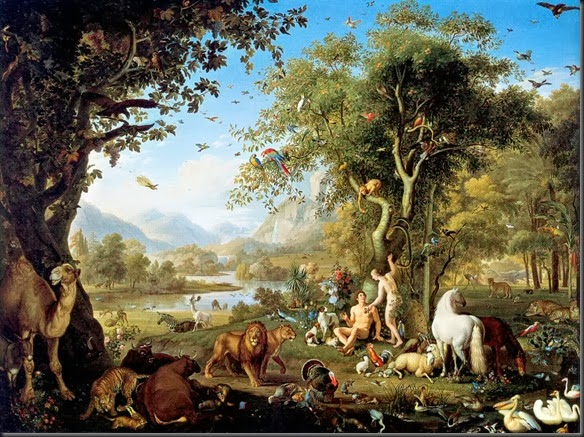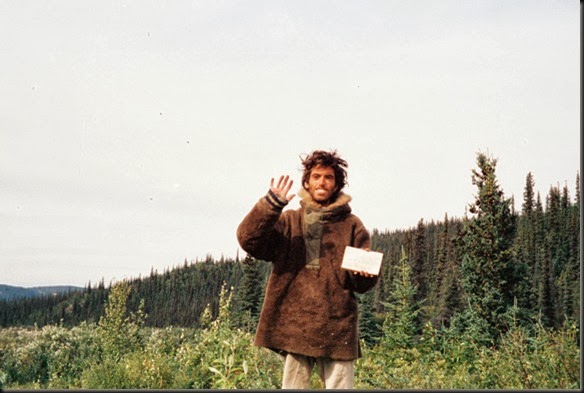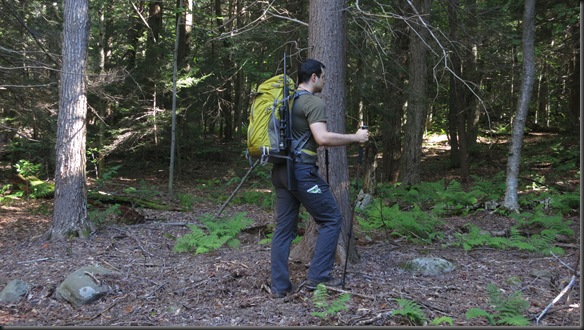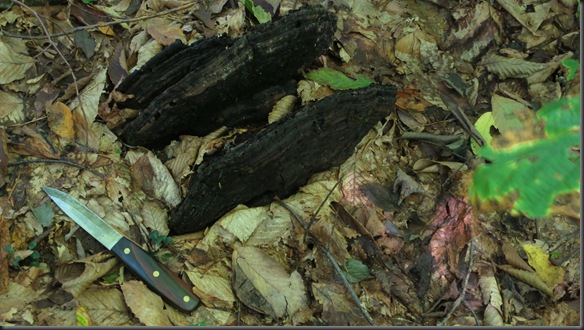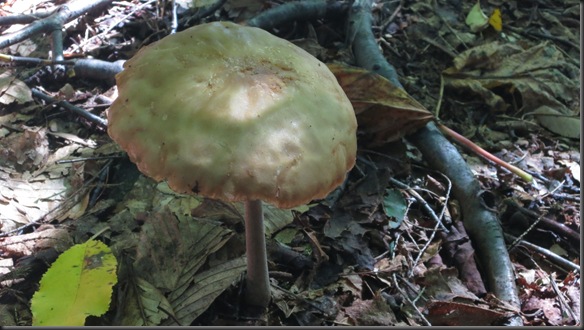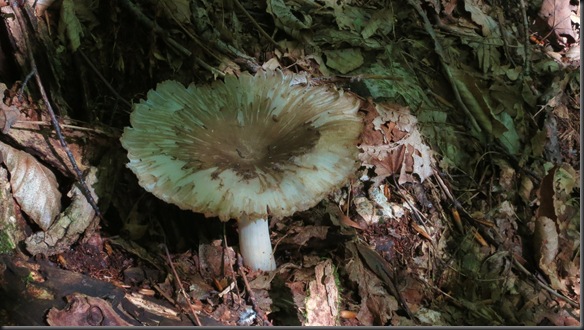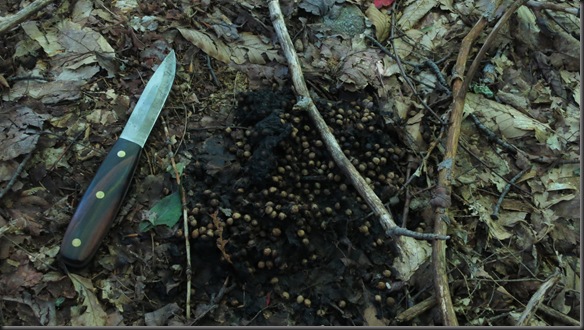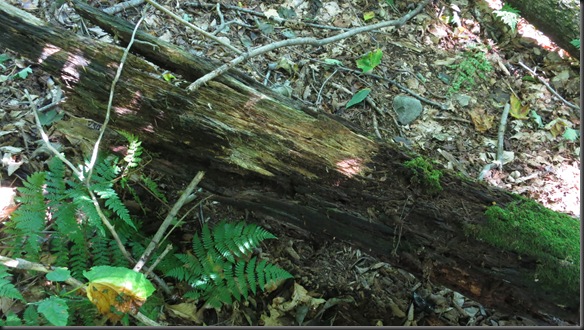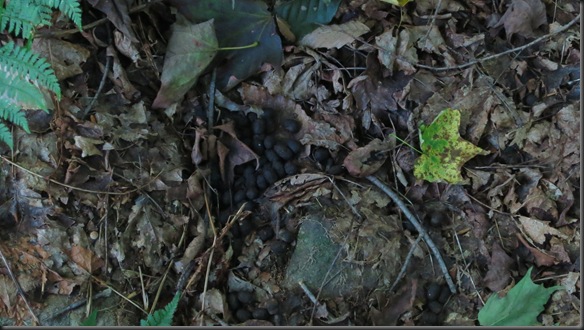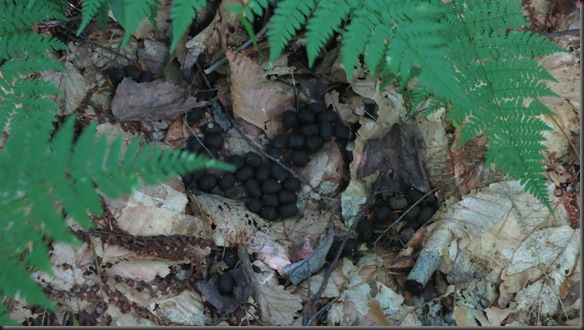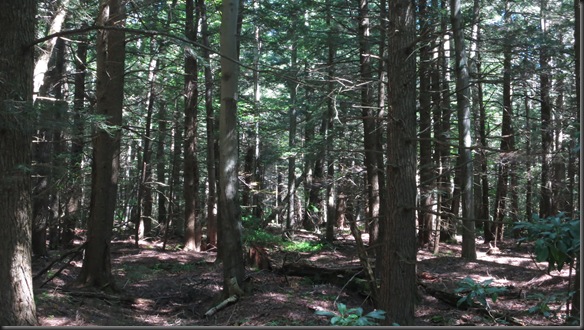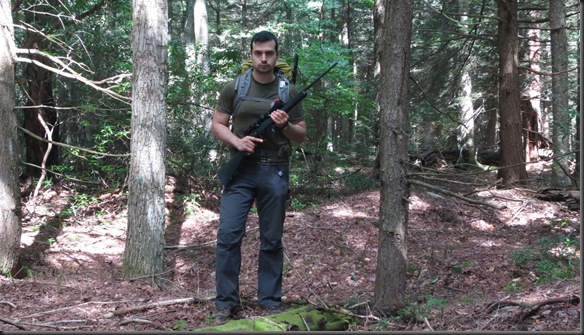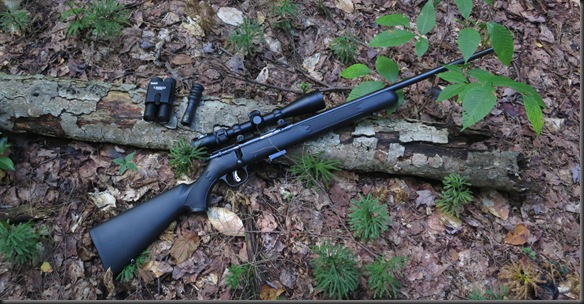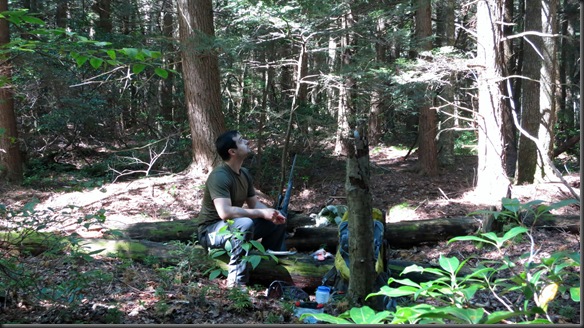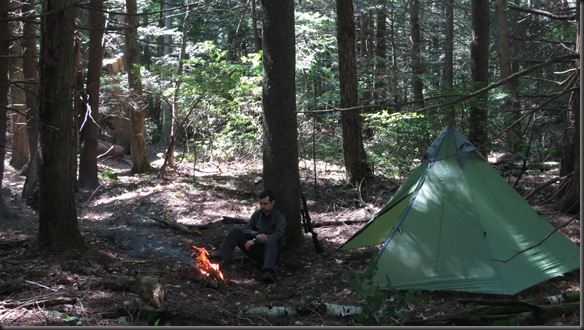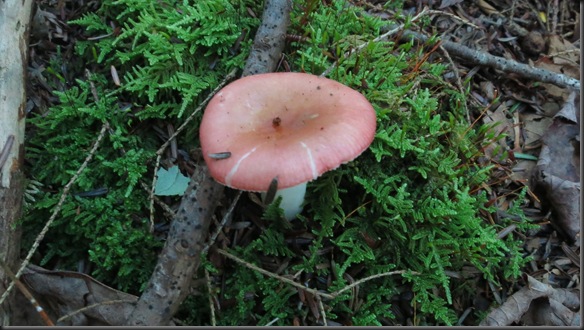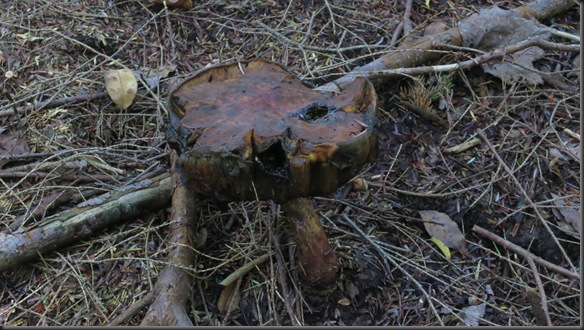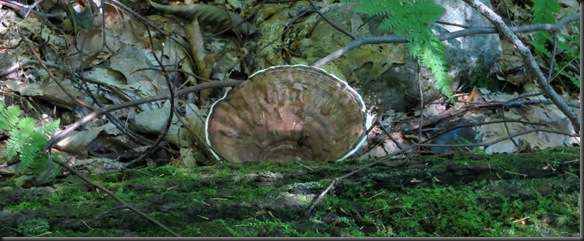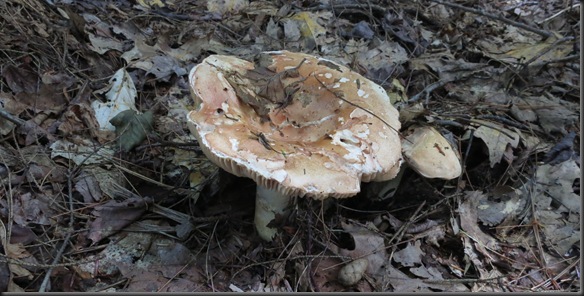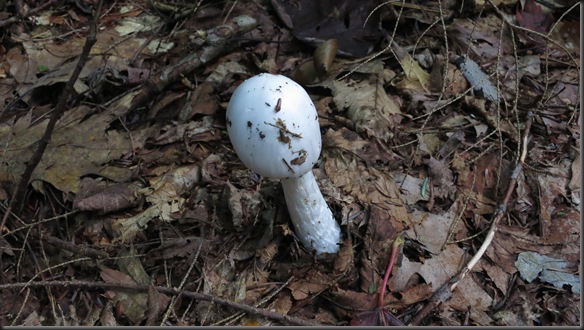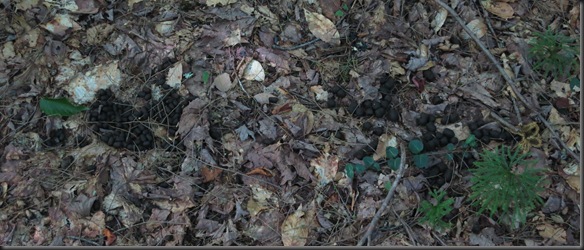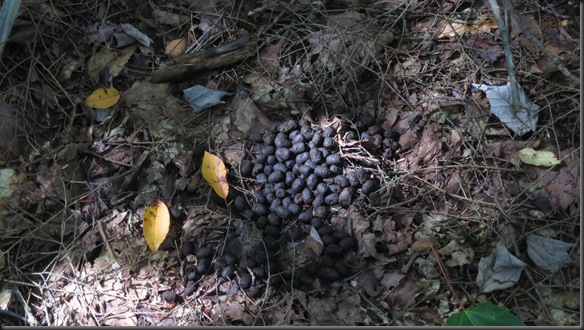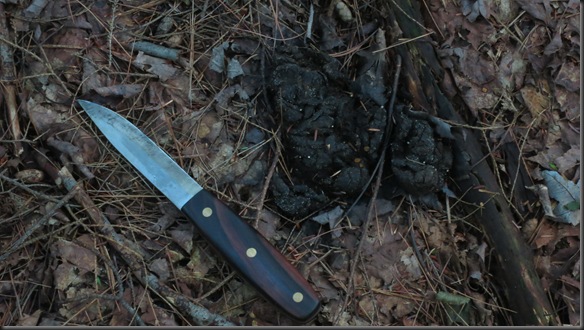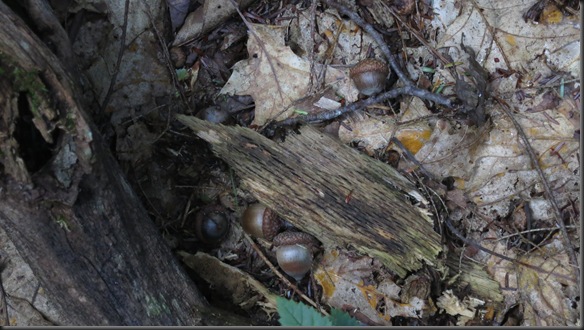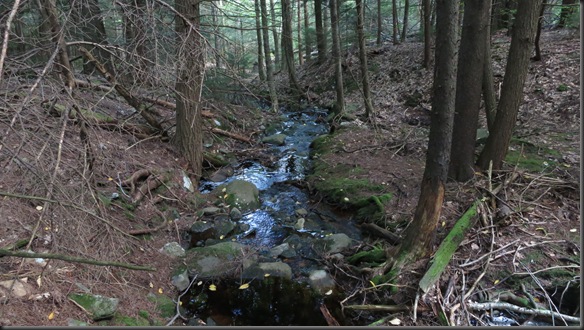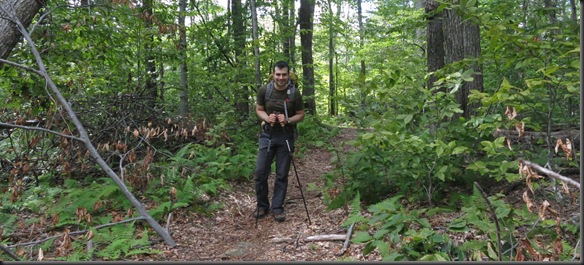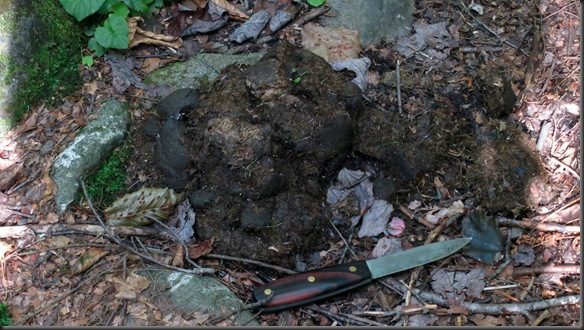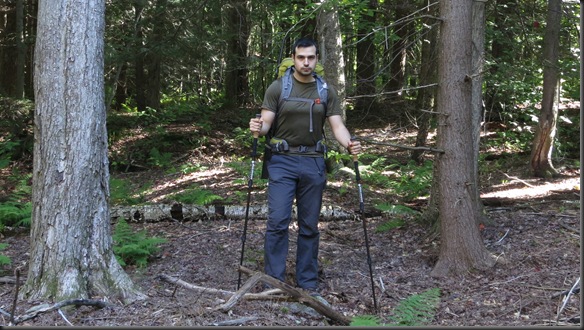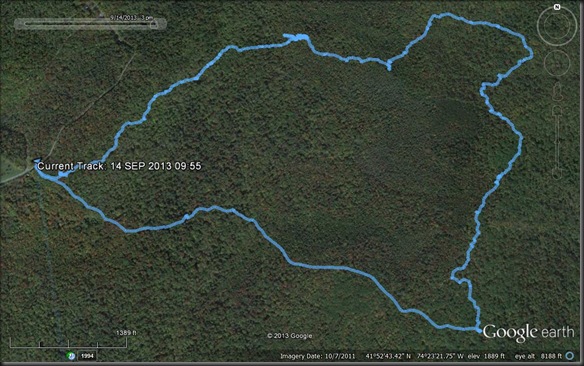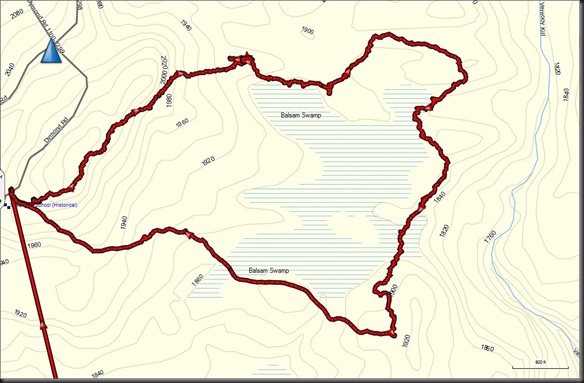Monday, September 30, 2013
Diciannove Italian Restaurant Launch - London
Kitchen Delights London Reporter @PaulFoodie is invited to the launch party of Diciannove and enjoys the most luxurious chocolate dessert.......
Diciannove is the latest Italian restaurant to hit London town. Nestling in the smart Crowne Plaza hotel in London’s Blackfriars, this is a quirky take on an Italian restaurant both for food and the interior.
We went to the launch night and were treated to prosecco, cocktails and nibbles from the in-house deli such as 24 month matured cheese and various cured meats. We also tried zucchini fritters with anchovy sauce and indulged in some fantastic pizza.
The restaurant is split into zones to meet different needs for different occasions. One moment we found ourselves on seats which could have come from inside a tube carriage – perfect to enjoy with friends or family, to more elegant dining areas with large round tables where you would go for a celebration.
To end the evening we were treated to a chocolate pot - a signature dessert called 'Delizia al Cioccolato' - a rich chocolate mousse with chocolate salami - wow! It really works despite the unusual flavour combination!
Grazie to the Executive Chef Alessandro Bay and his team - see you again soon.
Address: Diciannove, Crowne Plaza London, The City, 19 New Bridge Street, Blackfriars, London, EC4V 6DB (just around the corner from St Paul’s Cathedral)
Ninth Angkor Photo Festival 2013
The 9th Angkor Photo Festival is scheduled for November 23-30, in Siem Reap, Cambodia.It's longest-running international photography festival in Southeast Asia, will showcase the work of over 130 photographers, half of which are from Asia.
The week-long event will feature daily evening outdoor slideshow projections as well as 8 indoor and outdoor print exhibitions.
The 2013 Program is curated by the festival's program coordinator, Françoise Callier. In addition, Shahidul Alam (Director of Chobi Mela - Bangladesh) and Jean François Leroy (Director of Visa pour l’Image – France) will be its guest curators.
Some of the photographers who will showcase their work are Edwin Koo, Marylise Vigneau, John Vink, Patrick Aventurier, Kumi Takahashi, Gali Tibbon, Sankar Sarkar, Dina Oganova, Binh Dang, Abir Abdulla, Subrata Biswas, Antoine Raab and many others.
I was privileged to attend the Angkor Photo Festival in November 2011 and one of my photo essays The Possessed of Mira Datar was featured at the festival. It was an absolute delightful experience to be part of such an event, and the gracious hospitality of Francoise Callier and Jean-Yves Navel (the Festival Director) was instrumental in making it such success. I have no doubt that the festival in November 2013 will equally be as wonderful.
Sunday, September 29, 2013
Judge Solar Photovoltaic Scale - Review
These eye catching red Judge kitchen scales are solar powered and will work in both sunlight or artificial light. The slimline scales need only 60-90 seconds of light to activate them.
There is a large clear LCD display, the scales weigh g/lb:oz to 5kg/11lb and there are separate modes for measuring milk and water. A button on the base of the scales is used to set the scales for either metric or imperial measurements.
 |
| Add and weigh scales are easy to use Measuring milk using the milk mode |
Conveniently store away on their side
In poor lighting conditions or when measuring light amounts the reading can take a few seconds to settle down
The scales weigh accurately
High weight capacity of 5kg/11lb
Use any bowl of your choice for weighing out
No batteries required
2 year guarantee
Judge Solar Kitchen Scale J415
Price £24.00
Thank you to judgecookware.co.uk for the scales.
C'est Ca Vintage Bird Cage Kitchen Oven Gloves - Review
 |
| Made in Britain |
 |
| The gloves will look great in all kitchens |
- Cream and white design
- Long loop for hanging
- Glove area sits well above the wrist
- Tested to British Standard BS6526 for heat protection and insulation
- Made from cotton
- Reverse is 100% towelling
- Washable
- Available from Quality Independent Stores
- Price £16.75
Saturday, September 28, 2013
Tom Parker | Departures Magazine
 |
| Photo © Tom Parker-Courtesy Departures Magazine |
I occasionally leaf through Departures; a luxury magazine for American Express card members, and enjoy seeing the photographs by various travel-commercial/editorial photographers, whose work is clearly aimed at high-end magazine publishing. It's somewhat different from mine, since many of the photographs are carefully staged, involve styling, set up, reflectors, etc.
The latest Departures issue features a spread of photographs by Tom Parker, and it showcases the beauty of Ethiopia. The issue is only in print for the time being, but take my word for it, the photographs are beautiful. In fact, most of the issue deals with Africa and the photographs that are featured were well worth my taking the time to enjoy and learn from them.
I constantly learn not only from the work of travel-commercial/editorial photographers, but (as I previously wrote on this blog) from fashion photographers as well. If you browse through Tom's work, you'll note a preponderance of vertical (aka portrait) photographs, which are favored by magazine publishers. Landscape (or horizontal) formats are more suited to story telling photo journalism (whether travel photojournalism or otherwise.
Tom Parker is an English photographer who relocated to Nepal to write for an independent newspaper. Working as a reporter for BBC Radio 4, he photographed for London newspapers. In 2004 he based himself in Sri Lanka for 3 years and covered the tsunami as a photographer, BBC radio journalist and writer.
He then moved to Mumbai and travelled worldwide as a photographer, and later was appointed photo editor of Condé Nast Traveller India, launching Asia’s first edition of the magazine. He recently returning to the UK and is currently a contributing photographer for Condé Nast Traveller India and Architectural Digest India.
His work appears regularly in international publications including Condé Nast Traveller, Condé Nast Traveler, Departures Magazine, Vogue, GQ, GEO, House and Garden, Sunday Times Travel Magazine, WIRED, Guardian, Independent, Marie Claire and others.
Friday, September 27, 2013
Apricot Couronne - The Great British Bake Off
 |
| Apricot Couronne |
At least I had the full instructions in front of me, unlike the contestants who have to work through a few scant notes and are seriously under pressure.
I gave myself three hours to make the bread and it was ample time to make, prove, bake and decorate. When I placed my buttery filling of apricots, raisins and walnuts onto the dough and rolled it up like a swiss roll the dough seemed to stretch and have a mind all of it's own. Another observation, I didn't allow a large enough centre, although in the photograph it looks as though there isn't a gap in the centre, I'm pleased to say that there is! The icing was a little runny, it's drizzled over the couronne whilst it's warm and this makes the icing lovely and crunchy.
The couronne is fairly easy to make and would be a fabulous bake for the Christmas season. It's rich, sticky, tender and delicious. The bread kept happily for a couple of days under clingwrap.
To sum up, it took three hours to make, we ate it three times a day (well there were only two of us to get through it) and it took us three days to polish it all off! Although I say it myself, I was quite pleased with my first attempt at making this recipe......
The recipe can be found on the BBC Food website.
Thursday, September 26, 2013
Jessica Antola | Ethiopia
 |
| Photo © Jessica Antola-All Rights Reserved |
"...what consumed me were the people - strong
and loud in dazzling technicolor..." -Jessica Antola
Ah, Ethiopia! The country which added so much to many travel photographers' portfolios with its myriad photo opportunities, its handsome people with varying physiognomies and ways of life.
Here's the Ethiopian portfolio of Jessica Antola. Born in Los Angeles, she currently lives in New York City after living and working in Paris, Portland and Rome. In her decade long photography career, she has photographed advertising campaigns for globally recognized brands, features for international magazines and three books. She also produced images portraying people, cultures and landscapes from locations including: West Papua, Antarctica, Tibet, and Myanmar.
She was featured in AFAR magazine, and if you drop by her interesting Tumblr blog, you'll see a delightful photograph of a Yali man in his traditional koteka or penis gourd in West Papua, Indonesia.
Wednesday, September 25, 2013
Living Off The Land: Delusions and Misconceptions About Hunting and Gathering
Ah, living off the land. Thriving in the wilderness with the use of your skills. It is the ultimate goal of many bushcrafters and survivalists. Numerous posts have been written on forums about this subject, and as soon as one ends, another is started. Of course, actual evidence is rarely presented. We often fall back on positions such as “our ancestors did it, so clearly I can do it”, or “I was out last week and saw a bunch of cattails and barriers, so my food sources are secure”.
The problem is not made any better by so called experts in the field, who fuel the myth that they are feeding themselves in the wilderness. I vividly remember watching Andrew Price, host of A-Z of Bushcraft in one of the episodes, waking up in the morning, walking a few feet next to camp, gathering a few berries, and then turning the the camera and saying “breakfast is served”. Ray Mears, aside from his excellent series, Wild Foods, has numerous instances where he gathers meager resources and then implies that his food requirement have been met. Of course, none of them ever bother to calculate or present actual caloric values, or discuss the long terms consequences. Similarly, people like Dave Canterbury, who discuss at length hunting in wilderness living conditions, never actually do the math of how much game has to be killed to justify the weight of that shotgun being carried, or whether the numbers would work out at all.
For the past year I have been attempting to gather some actual numbers on the subject, so we can have a more meaningful conversation about what it would take to sustainably feed a person in the wilderness, and consequently, what tools may be suited for the task. I must admit, I have been slacking with the project because of its tedious nature. Last week however, a reader referred me to a source related to the Chris McCandless post, which provided me with some of the information I was searching.
Samuel Thayer, author of the books Forager’s Harvest and Nature’s Garden, wrote an essay related to the starvation of Chris McCandles titles Into the Wild and other Poisonous Plant Fables. While much of the essay focuses on disproving theories of poisonous plants, the last section discusses actual caloric requirements for a person living in the wilderness, and what resources that would require.
So, let’s assume a scenario where a person will be going into the wilderness with the intention of living off the land. He will practice wilderness self reliance, he will thrive in nature, and whatever other cliché you want to insert here. Let’s also assume for the moment that there are no hunting or fishing regulations that we have to comply with, and let’s assume that the person has all necessary equipment, including hunting and fishing tools. What would the person need to procure each day in order to live in a sustainable manner for a prolonged period of time?
Well, the first piece of the puzzle is the required calories. Citing Michele Grodner’s Foundations and Clinical Applications of Nutrition, Thayer calculates that a male who is physically active under wilderness living conditions would need approximately 3,300 calories per day. This number seems consistent with calculations done by long distance backpackers, who usually aim for a bit over 3,000 calories per day. So, to maintain one’s physical condition, and prevent weight loss, the person in question must consume about 3,300 calories each day. Of course, there are other nutritional requirements, but at a very basic level, to prevent death from starvation in the long run, this caloric minimum must be met.
The above caloric requirement for wilderness living should not be confused with accounts of short term survival, where a person stays in the wilderness, slowly losing body weight, until they are rescued. We have plenty examples like this from series like Survivorman, Naked and Afraid, etc. Those are not examples of sustainable hunting and gathering situations, and we should not have any delusions about the long term applications of such a starvation diet.
So, sticking with the 3,300 caloric requirement per day, what would it take to meet these caloric needs?
Sources of Calories
Meat
First let’s look at animal products, something to which I will jointly refer to in this post as “meat”, but should be understood to include both protein and fats. Meat can vary in caloric content anywhere from 40 calories per ounce for lean meat like squirrel and rabbit, all the way to 60 calories per ounce for very fatty meat like salmon. Using these numbers, we can roughly calculate the caloric value of each animal, and how much of it we would need to meet the our daily caloric requirements.
Red Squirrel: as Thayer calculates, at an average of 2.8 ounces of meat per squirrel (Michele Grodner’s Foundations and Clinical Applications of Nutrition), it would take 25 squirrels per day to meet the caloric requirements, or if also eating the internal organs and brain, about 16 squirrels per day.
Rabbit: at about 16 ounces of meat per rabbit (Michele Grodner’s Foundations and Clinical Applications of Nutrition), you would need about 4 of them per day, or 3 if eating all of the organs and brain.
Salmon: assuming you are catching Sockeye salmon, they average 6 pounds (96 ounces) (Kenai Peninsula Borough Commercial Fishing Industry State Records, 2012). Since salmon meat is rich in fat, we can assume 60 calories per ounce (USDA SR-21), which would mean one salmon would give you 5,760 calories, or a little under two days of food.
Clams: clam meat varies in caloric density from about 33 calories per ounce to about 42 calories per ounce. (Interstate Shellfish Sanitation Conference, 2013). To satisfy the required 3,300 calories per day intake, you would need about 5 pounds of clam meat per day (using 40 calories per ounce for the calculation). In order to get 5 pounds of clam meat, you would need about 320 medium size clams. For each ounce of meat, you need about 4 medium size clams. (Interstate Shellfish Sanitation Conference, 2013)
Raccoon: while many people would not eat raccoon meat due to its high content of parasites, it is technically edible. The meat is fatty, averaging about 72 calories per ounce. (USDA SR-21) The weight of raccoons varies widely from 10 to 25 pounds for adults. The average listed size is about 25 pounds for an adult. That should provide approximately 10 pounds of meat once it is gutted, skinned and deboned. At 72 calories per ounce, such a raccoon will provide about 11,520 calories. However, keep in mind that these numbers reflect the calories if the animal is cooked to preserve all of its nutrients. In order to make it more palatable, people usually cook raccoon meat to remove most of the fat. If you do that, the caloric content will drop significantly. Assuming you save all of the fat however, a 25 pound raccoon should provide sufficient calories for 3.5 days.
Turkey: a good size turkey will yield about 10 pounds of meat (160 ounces) when processed. The caloric value of processed turkey meat is about 45 calories per ounce (USDA SR-21). Therefore, a turkey will produce 7,200 calories in total, or a bit more than 2 days worth of caloric requirements.
Deer: a mature buck typically yields about 70 pounds of meat (1,120 ounces) (University of Wisconsin study 2006). Venison is a lean meat, with about 53 calories per ounce (USDA SR-21). The meat of a mature buck will therefore give you 59,360 calories, which will be sufficient for 18 days of food at the 3,300 calories per day requirement. If you are eating the internal organs as well, that will probably get pushed to about 20-21 days of food.
Black Bear: a large black bear will produce about 100 pounds of meat (1,600 ounces) once processed. Bear meat has about 43 calories per ounce. (USDA SR-21) So, a large black bear will give about 68,800 calories total. That would be sufficient calories to satisfy the caloric intake for 21 days.
The table below gives a general summary of the results. The numbers you see in the last column for animals needed each day to meet the caloric requirement, the number in parenthesis represents what is needed if internal organs are preserved and eaten as well as the meat.
| Meat | ||||
| Type of Animal | oz of Meat/Animal | cal/oz of Meat | Total cal/Animal | Animals/Day |
| Squirrel | 2.8 | 47 | 132 | 25 (16) |
| Rabbit | 16.8 | 47 | 790 | 4 (3) |
| Salmon | 96 | 60 | 5,760 | 0.57 |
| Clams | 0.25 | 40 | 10 | 320 |
| Raccoon | 160 | 72 | 11,520 | 0.29 |
| Turkey | 160 | 45 | 7,200 | 0.46 |
| Deer | 1,120 | 53 | 59,360 | 0.056 (0.05) |
| Black Bear | 1,600 | 43 | 68,800 | 0.047 |
Plants
Now, let’s move to plant sources.
Cattail Roots: cattail roots, will yield about 8 calories per ounce (USDA SR-21; Revedin, A., et al. Thirty thousand-Year-Old Evidence of Plant Food Processing, 2010). This means that about 413 ounces or 26.5 pounds of cattail flour would be needed to meet that daily caloric requirements.
It should be noted (as pointed out by a reader in one of the comments) that Table 2 of the above study, Thirty thousand-Year-Old Evidence of Plant Food Processing, 2010 provides that cattail (Typha) rhyzome flour contains 266 kcal/100g, or 75 calories per ounce. That is much higher than the 8 cal/oz provided by the USDA and other sources. It appears the difference occurs because that table speaks of the caloric value of already processed and cooked flour. The article specifies that "The flour would have undergone a multistep processing involving root peeling, drying, and finally grinding using specific tools. After this, the flour needed to be cooked to obtain a suitable and digestible food." Cattail rhyzome contains large portions that are inedible, such as the spongy layer covering the rhyzome as well as the fibers from which you have to remove the starch. As such, the numbers don’t appear to be contradictory. You may very well have a caloric value of 25 kcal/100g (8 cal/oz) for cattail root and 266 kcal/100g (75 cal/oz) for processed cattail root flour where the outer casing has been peeled, the fibers have been removed, and the resulting starch cooked. In the table here I have used the number for unprocessed cattail root, and the quantity you would need to get the necessary calories.
Parsnips and Similar Wild Roots: according to Thayer, at approximately 23 calories per ounce (Michele Grodner’s Foundations and Clinical Applications of Nutrition), about 9 pounds would be needed per day to meet the daily caloric requirement of 3,300 calories.
Blueberries: again, according to Thayer, at about 16 calories per ounce (Michele Grodner’s Foundations and Clinical Applications of Nutrition), you would need 13 pounds of blueberries per day to meet your caloric requirements.
Lingonberries: at about 5 calories per ounce (USDA SR-21), you would need about 41 pounds of lingonberries to meet your daily caloric requirement.
Acorns: once processed into a flour, after leaching out the tannic acid acorns will provide about 110 calories per ounce (USDA SR-21). That would mean that 30 ounces, or a little under 2 pounds of acorn flour would be needed per day to satisfy the caloric requirements.
Burdock Root: at about 20 calories per ounce (USDA SR-21), you would need about 165 ounces, or 10 pounds of unprocessed burdock root to meet your daily caloric requirements. If cooked, a large amount of the water removed, the pounds one needs to consume may be significantly reduced, but would still constitute more than what a person can eat in a day.
| Plants | ||
| Type of Plant | cal/oz of Plant Material | Pounds Per Day Needed |
| Cattail Root (Unprocessed) | 8 | 26.5 |
| Parsnips | 23 | 9 |
| Blueberries | 16 | 13 |
| Lingonberries | 5 | 41 |
| Acorns (processed) | 110 | 2 |
| Burdock Root | 20 | 10* |
The above represent average numbers, both for the calories required per day, and the amount of food which must be consumed to provide those calories. Variations should be expected. Even so, it is evident that a person attempting to live alone off the land in the wilderness has a serious challenge on his hands. The amount of food required seems absurd, but as Thayer explains: “If this seems like a high volume of food, that’s because it is. We have sought, developed, cultivated, and become accustomed to calorie-dense foods for so long that most of us have never been without them. We’ve never had to eat food in volumes like this. When you realize that a stick of butter has as many calories as two and a half quarts of blueberries or seven pounds of broccoli, you can see why the innate human desire for calorie-rich, low-fiber food developed.”
Gathering
The gathering of food has become a great area of teaching for survival and bushcraft instructors. Unfortunately, much of the teachings create a false impression of what it actually takes to feed oneself through gathering of food in the wilderness. As Thayer also noted, many such instructors teach, or imply through their representations that a very small amount of food is needed for a person to sustainably live in the wilderness. Whether the misrepresentations are intentional, or due to lack of knowledge is hard to say, but the results are the same-people fail to realize how much food must be gathered to sustain a person long term.
We have to make a clear distinction between “edible” plants and “food”. Just because something can be eaten, does not mean that it contributes to your caloric requirements in any meaningful way. Many staples of bushcraft teachings, such as dandelions provide virtually no caloric value. You can easily starve to death with a stomach full of such plants. In fact, it is not unlikely that a person may spend more energy gathering edible plants, than the calories he will get from consuming them. To effectively gather food in the wilderness, one has to know not only what is edible, but also what provides meaningful calories.
From the plants available and listed in the above chart, not surprisingly acorns provide the highest nutrition. I imagine it will be similar for other nuts because of the high oil content. If processed correctly, a person can certainly provide enough food for himself using acorn flour. The other plants that are readily available, including the all too popular cattail and burdock roots, are far less than ideal when it comes to providing sufficient calories for a person attempting long term living. Not only would it be difficult to supply yourself with enough of the plant, but consuming such large quantities would be impossible. We should also keep in mind that the plants I have listed here are the ones with relatively high caloric value.
On that subject, Thayer writes with respect to Chris McCandless, “If he didn’t get any meat, couldn’t he just eat more lingonberries and get all his calories that way? Absolutely not. He would have needed to eat almost three gallons of lingonberries per day. He’d probably be vomiting before finishing the second quart. No matter how many lingonberries were available to him, his body would have only accepted them for a small portion of his caloric requirement. This doesn’t make lingonberries “poisonous”; the same is true of virtually every food, although the appropriate proportions vary… The concept that foods can be eaten only in appropriate quantities is taken so much for granted that, to my knowledge, it has never been given a name in the medical literature. I call it themaximum caloric proportion (MCP). Some foods have a very high MCP, such as milk, meat, and potatoes. They are easily digested and contain few antinutrients or toxins, thus they are suitable as dietary staples. Others, such as cabbage, rhubarb, and raspberries, cannot serve as staple foods and are only suitable to supply small portions of the diet. As one travels north, there tends to be fewer plants with a high MCP; this is why hunter-gatherers from northern latitudes ate meat for the great majority of their calories.”
As a result, if you can not find the right plants and gather it on a large enough scale, or have simply missed the gathering season, one typically has to resort to meat for the majority of the required calories. So, let’s look at some of what is required in terms of providing sufficient calories through hunting and fishing.
Opportunity Cost of Hunting and Fishing
Before we look at specific examples, it is important to note that when we speak of hunting and fishing, activities which require that you bring specific equipment into the woods, we have to look not only at what you can successfully hunt, but also at the opportunity cost of that equipment. What I mean by that is that for each pound of equipment which you bring with you, you have to forego a pound of some other resource which you could have brought with you instead. Since we are assuming a person who is otherwise prepared for the wilderness, the most immediate opportunity cost is food. For each pound of gear that you bring, you have to leave behind a pound of food. So, when you bring a 7 pound rifle with you, you could have instead left it behind and brought 7 pounds of food. So, when we look at the equipment one may bring for such hunting, we have to see not only if it can get us any food, but also whether the food we can procure with it is more than the food that we could have brought with us had we not brought the equipment.
To complicate things further, we have to look not only at the weight of the food, but more importantly at the caloric content of that food. So, a pound of squirrel meat will give us 752 calories. On the other hand a pound of instant mashed potatoes will give us 1,664 calories. For this post, I will use mashed potatoes as a base line for calorie dense food that could have been brought into the woods.
Fishing
First, let’s look at fishing. Fishing is a good way to procure calories because the equipment required is not heavy, and is relatively reusable. A large net, fishing rod, reel, lures, and a sizable spool of line will only add up to a few pounds. You guys have seen my lightweight fishing kit, which came in under one pound. A more robust and complete kit can be estimated to around 3 pounds. 3 pounds of gear has the opportunity cost (using the above base line numbers) of 4,983 calories, or about day and a half of food at the required 3,300 calories per day. From a simple numbers standpoint, this means that the first day and a half worth of food that you catch will go to offset the weight of the gear (which you brought rather than bringing food). Everything you catch after that is surplus.
The downside of fishing of course is the limited availability of resource reach areas. For example if you are lucky, and are in an area and the right time for a salmon run, as we saw from the above numbers, a single sockeye salmon will give you about two days worth of food. That means that the first salmon would offset the opportunity cost of the fishing gear, and every subsequent one will be pure food value. If you can catch one every two days, you will be able to meet your caloric requirements. The problem of course is that you may be a week late, and not find a single salmon because the run has ended; or, you may be in an area where no such fish is available; or you may be in an area where there is no body of water which carries any sizable fish at all.
Remember, it takes about 3.5 pounds of salmon per day to meet a person’s caloric requirements. If instead of a 7 pounds salmon, you were pulling out 3 ounce sunfish out of the water, the calculations would be very different. At approximately 50 calories per ounce of fish meat, you can do your own math to see how much fish you would need. I remember an episode of Ray Mears Extreme Survival where he caught a small fish while he was in the Rockies, and prepared it with some plants. It may seem like he has prepared a good dinner, but the reality is that the meal probably contains less that 300 calories, about a tenth of what is needed for the day if we are facing a long terms sustainability situation.
Even with all those considerations however, if you have selected an area close to a sizable body of water for your long term wilderness living situation, fishing is a good way to procure food because of the low weight and reusable nature of the gear, as well as the low amount of energy expenditure required.
Hunting
Now, let’s look at hunting as means of procuring food. Obviously, a hunter needs his tools. There are a lot of misconception from people who do not hunt that you can use primitive weapons, constructed in the woods, to effectively hunt. The difficulty of such a task is nearly always underestimated. Thinking that a person can construct a stick bow, or carve a longbow in the woods from an unseasoned piece of wood, and then go hunting with it in an effective manner is wishful thinking. Keep in mind that a hunter with a modern state of the art bow, with modern optics and range finder, will rarely take a shot at over 50 yards. If you are hunting with an improvised bow, lower that range to about 25 yards. Now, go measure out 25 yards and try to think of what it would actually take for you to get to within 25 yards of a deer. Then, think of what accuracy would be needed to hit a squirrel at 10 yards with that same bow. You will quickly gain a healthy appreciation for modern weapons.
Most people who are contemplating long term wilderness living will use some type of firearm, much like Chris McCandless did during his attempt. In recent years, Dave Canterbury, former co-host of Dual Survival, has popularized the single show 12 gauge shotgun as a weapon for long term wilderness living. In this post I will not address any issues regarding whether I believe that to be the best choice, but I will simply use it as a base line for purposes of discussion. A single shot 12 gauge shotgun weighs approximately 6 pounds (H&R Topper Deluxe with synthetic stock). Using the number we previously calculated for calories per pound of food which we could have brought into the woods (1,664 cal/lb), we can calculate that a 6 pound shotgun has the opportunity cost in terms of food of 9,984 calories, or about 3 days worth of caloric intake. That would mean that the first three days worth of food which you kill will go to offset the weight of the gun (keeping ammunition weight aside for now). So, if your trip is less that three days, even best case scenario (you being able to successfully kill enough game each day to meet the 3,300 calories per day requirement), you would be better off simply bringing your food with you. That way the availability of food is guaranteed.
For trips longer than three days, the gun would theoretically be the better bet, assuming you can secure enough food with it. So, let’s look at what that would entail. Let’s assume that you are now hunting small game with lightweight shotgun shells (2 3/4 shells with 1 oz load). Each such shell weighs 1.4 oz. So, for each shell fired, we have to add that weight to the opportunity cost, meaning, for each box of shells, we could have simply brought food with us. We than have to see if the numbers work out.
As I was saying, let’s assume you are hunting small game. As we established earlier, it would take 25 squirrels to provide enough meat for a day’s worth of calories (3,300 cal). Killing 25 squirrels with the above ammunition would require 35 ounces of shotgun shells. Using our caloric value for instant mashed potatoes from above at 104 calories per ounce, the same 35 ounces if brought in the form of mashed potatoes instead of shotgun shells would give us 3,640 calories, more than what you would get from the squirrel meat. That means that if you are hunting squirrel with shotgun shells, you will never procure enough meat to offset the weight of the gear that you have to bring. You will be better off bringing food with you rather than the equivalent weight of ammunition. That is not to mention the weight of the shotgun itself, for which you could have brought an additional 3 days worth of food.
The numbers of course look much better when we consider larger game. If we are hunting rabbit, 4 of them would give us the caloric requirement for a day. That would mean we would have the expand 4 shotgun shells, at a total weight of 5.6 ounces. The equivalent weight of mashed potatoes will only give us 582 calories. In that instance, again, assuming perfect accuracy and availability of sufficient targets, the shotgun will be the better bet. The numbers of course look even better when hunting large game like deer.
A possible way to address the problem with small game hunting is to use different ammunition. While a shotgun shell weighs 1.4 oz, a .22LR cartridge weighs 0.1 oz. 25 squirrels will require only 2.5 ounces worth of .22LR cartridges, making it a viable option. The solution proposed by Dave Canterbury is to carry an adaptor, which inserts in the shotgun, allowing you to fire .22LR bullets. While the approach is viable in theory, if that is the route you chose to take, keep in mind that this is quite possible the least accurate way to fire a .22LR bullet. A non properly bedded, 10 inch rifled insert will give only marginal accuracy, made even more difficult by aiming only with the aid of a bead sight. You should adjust your ammunition count accordingly. After all, the goal here is to kill game, not to just fire ammunition.
Lastly, all of the numbers provided in this post assume 100% accuracy and unlimited availability of any particular resource. Obviously that is not the result in reality, but here I am assuming best case scenario. Success rates for hunting, or hunting strategies are beyond the scope of this post. The only thing I will say on the subject is to be careful when extrapolating success rates for a wilderness living situation based on anyone's success rate when hunting closer to home. A lot of hunting these days is done on people’s personal property and close to civilization. That has a huge impact on game centralization. Food plots, open terrain of farms, fields, and roads are a great attractant to animals, which in turn become familiarized with people. Hunting in such an area is very different from going deep into the woods and attempting the same thing. One way is not necessarily better than the other, but there is a danger in trying to extrapolate your possible success rate when hunting in a wilderness living situation based on success rates in the woods behind the house.
Trapping
I have added a trapping section to the post since I first published due to several comments requesting information on the subject. The reason why I didn’t originally include a section on trapping is that an animal caught through trapping has the exact same caloric value as an animal caught through hunting. The ease of hunting, trapping, or gathering is beyond the scope of this post. For all of the numbers I have presented here, I have assumed 100% success rate and infinite availability of the particular resource.
I will discuss a few of the legal issue involved with trapping, but I will mention a few things here.
First, it is very hard to get data on trapping in the wilderness. The reason is that most trap lines are run close to home for reasons I will explain in the section on legal considerations. As a result, it is hard to find data from an actual wilderness trap line, so some of the aspects of trapping during long term wilderness living are hard to address.
Also, just like with hunting, be careful when extrapolating success rates for wilderness trapping conditions based on trap lines run close to home. Around where I live, there are large numbers of raccoons. I saw five of them walking through the parking lot two weeks ago. It is a different story when you are actually in the forests.
As I will explain below, trapping, just like hunting, requires gear. You will have to bring your traps with you. What traps you use and their size will vary greatly depending on what animal you are trapping and where you are doing it. Factor that weight into your calculations and determine the opportunity cost to see if the numbers work out under the specific conditions.
Legal Considerations
Lastly, we have to get back to that issue which we put to the side earlier, the law. Assuming we do not wish to be poachers, and are actually contemplating living in the wilderness within the real world rather than some imaginary scenario, we have to comply with regulations. Hunting seasons will vary trough different areas, but for most species, especially large species, it will be quite limited. For example, in the State of New York (southern region), deer and bear seasons are from Nov 16 – Dec 8; turkey season is from Oct 1 – Nov 15 in the fall and May 1 – May 31 in the spring; cottontail rabbit is from Oct 1 – Feb 28; gray and fox squirrel is from Sept 1 – Feb 28; grouse is from Oct 1 – Feb 28, etc. There are a few species that can be hunted year round, such as red squirrel, porcupine, rock pigeon, and woodchuck. As you can see however, the limitations are severe.
Above we calculated that a mature white tail buck will give us about 21 days worth of calories if properly processed and preserved. Let’s assume that you can supplement it with other sources of food, and extend that time to a month. If you are hunting deer lawfully, that would mean that to provide sufficient calories for the full year, between the dates of Nov 16 – Dec 8, you will have to kill 12 mature deer in that 3 week period. You have to average 4 deer per week. The practical difficulty with such a task is not the only problem. Most states have restrictions on the number of deer that can be harvested. In NY it is usually 1 or 2 per year.
Now, using New York State as an example, let’s see if the necessary calories for a person for a period of one year can be legally acquired through hunting. The generally available large game would be deer, bear, and turkey. In certain areas, the hunting of other large game like elk, moose, duck and geese may be legal and available. In NY we have good access to duck and goose hunting, but no elk or moose hunting. So, let’s look at the generally available game. Let’s assume that you have two buck tags, one bear tag and four turkey tags (two spring and two fall).
One black bear gives us 68,800 calories. Two bucks, at 59,360 each will give us 118,720 calories. Four turkeys at 7,200 calories each gives us 28,800 calories total. Combined, the bear, deer, and turkey give us 216,320 calories for the annual hunting season.
The caloric requirements for one person for one year based on the 3,300 daily requirement we used above, would give us 365 days times 3,300 calories per day, for a total of 1,204,500 required calories per year.
So, assuming you are a skillful hunter, and luck was on your side, and you managed to fill all of your tags (one black bear, two deer, and four turkey), that will still leave you at a caloric deficiency for the year of 988,180 calories. In other words, you will have no food for 299 days out of the year. If available in your area, you may be able to decrease the deficit by hunting other large game if available, like elk, moose, and duck, although, it appears that a large deficit will remain.
Just to give some perspective, assuming that a duck or goose provides the same amount of calories as a turkey, it would require 137 ducks or geese to satisfy the above caloric deficit (assuming no legal limit on the number you can harvest). Assuming you are hunting those ducks with a 3 inch shotgun shell with a 1 3/4 load, which weigh 2.2 oz each, and assuming perfect accuracy, that would require about 19 pounds of ammunition.
On the other hand, you will have to kill or trap a whole lot of squirrels to make up for the deficiency, approximately 7,486 squirrels, which if hunted with .22LR ammunition, and assuming perfect accuracy, would require about 47 pounds of ammunition.
Trapping is also an option, but you have to keep a few things in mind. First, trapping, just like hunting is regulated and only allowed during certain seasons. Second, the way you can trap is heavily regulated. Deadfalls, snares, hooks on trees, and virtually all DIY traps are not allowed. The regulations are very specific as to exactly what trap you must use for each animal. Third, trapping is generally only allowed for furbearers. In most areas you are not allowed to trap game animals. Some furbearers like beaver are edible, others not so much. Last but not least, regulations typically require that you check all of your traps every 24 or 48 hours. For most people that places serous restrictions on where traps can be placed and limits the size of the trap line. The result is that most trap lines are run close to home with the few exceptions for people who travel deep into the woods and then live there for the trapping season.
The alternative is that you need to systematically exploit another abundant resource such as large scale gathering and processing of acorns when in season, or moving to take advantage of large scale fish migrations and then catching them with nets, fishing wheels, etc. where the law allows.
Do the numbers work out? You do the math. I think we get a better appreciation for why high calories foods such as pemmican and corn meal were so highly valued and commonly carried by woodsmen in the past.
I don’t write this to discourage anyone from attempting the challenge, nor do I believe it to be impossible. In this post I am simply attempting to provide some more solid data that can be used to make a realistic evaluation of exactly what it would take to thrive alone in the wilderness. As Thayer writes: “In a long-term subsistence situation, food is the priority. In former times, the native people of the Far North planned each move according to food availability... In a short-term survival situation, food is of minor importance. However, in long-term survival or “living off the land,” it is of paramount importance.”
There was a time when men who ventured into the wilderness knew what resources were required, and how much of them had to be brought along. Their accounts often refer to base camps, cabins, and food stocks being carried on horse back, mule train, or by dog sled teams. Somewhere along the way we seem to have lost the realistic grasp on those requirements, and were left with nothing more than romantic musings and conjecture.
Tuesday, September 24, 2013
Constantine Manos | Leica & Magnum
Here's a Leica Camera documentary on Constantine ("Costa") Manos, the Magnum photographer known for his photographs of Boston and Greece.
Let me share a story about Costa Manos.
In 2000, I joined a street photography workshop in Old Havana with Costa Manos as instructor. It was one of the foreign destination workshops by the Maine Photographic Workshops, and probably the only workshop I ever attended. It was just after the Elian Gonzales custodial battle, which made authorized travel to the island more difficult than usual...but the workshop went ahead, and a small group of hard-core photographers made it (somewhat circuitously because of our US passports) to Havana.
It was still pre-digital world at the time, and for Costa to edit our photographs, we had to use color film and have it processed at local photo processing stores. Naturally, the quality left much to be desired, but the processing was fast and cheap. I had just returned from Nepal and India, and was quite full of myself...and super proud of the portraits of sadhus and Nepali women that I displayed to the group and for Costa's critique.
He took his time looking at my photographs, and probably seeing I was getting a little anxious, he told me something I have never forgotten:
"Your pictures are technically fine, but they're too simple...I want you to bring me complicated pictures; pictures that tell stories; pictures that I can look at for a long time..."
If there's only one piece of advice that guided my photographs since 2000, it was this. And it was then I began trying to complicate my photographs, to complicate my compositions. and to try to insert and build layers upon layers in them. Sometimes I succeed...and sometimes I fail. Most of the time, it falls somewhere in the middle....but I never forgot Costa's advice.
 |
| Photo © Constantine Manos-All Rights Reserved |
Monday, September 23, 2013
A Love for Food by Daylesford - Book Review
Carol Bamford, the founder of Daylesford, came to Gloucestershire in 1992 and the start of the journey was to convert the land to become organic to produce local, seasonal and sustainable foods. A step back in time - I can remember my grandparents having a huge allotment, no pesticides were ever used and the fresh produce meant that there was always good food on the table. There were also a few hens in the garden at the back of the house which meant lots of fresh eggs for eating and baking.
I've spent a good few weeks reading A Love for Food and because it is so much more than recipes it has taken me a while to write a review.....
Throughout the book we are introduced to some of the team who are passionate about their work at Daylesford, reading their stories and how they came to be part of the journey. Jez Taylor - The Market Gardener, John Longman - The Cheese Room, Eric Duhamel - The Bakery, Richard Smith - The Livestock and Andy Wheeler - Black Barn Chef.
I can't resist a great chilli recipe and this one from the book is a winner.
 |
There are many seasonal recipes throughout the book including rhubarb queen of puddings - smashed broad beans with peas - mint, tomato and feta salad with a mint and lemon dressing.
Some of the recipes which caught my eye are roast rib of beef with Dijon mustard and balsamic vinegar, cod with lemon, parsley and tomato butter, Bledington Blue Cheese and brocolli tart, blood orange and polenta cake with orange whipped cream, chicken casserole with a splash of brandy and salted ginger treacle tart. Christmas mince pies and a Christmas Cake recipe from the family of Carol Bamford are also included.
Chapters and notes within the book include from the market garden - salads and vegetables. The cheese room - savoury tarts and pies. Meat - with notes on casseroles and notes on roasts with useful guidelines.
I particularly enjoyed the bread chapter with notes on ingredients and technique. There is also a day by day guide outlining how to make natural leavens with grapes and recipes for sourdough once you have made the natural leaven.
The sign of a good cookery book in my house is one that has sticky notes attached to the tops of pages to help me find recipes that have caught my eye - this book has many sticky notes attached.....
There are family recipes and also recipes that will be familiar with foodies who visit the farmshop and cafe, but for those of us who have yet to visit, we can now make these award-winning recipes in our own homes.
This is a substantial book with 424 pages, seasonal recipes and a general mix of recipes from savoury to sweet, not all recipes are accompanied with a photograph of the finished dish. All of the recipes are easy to follow and are written thoughtfully with a guiding hand. A cookery book for foodies, those who grow their own fruit and vegetables and cooks who use local organic produce.
Price £30
Published by Fourth Estate
Thank you for the review copy.
Saturday, September 21, 2013
Individual Pineapple Tart Tatin - Recipe
 |
| Pineapple Tart Tatin made with fresh pineapple |
 |
 |
| The pineapple rings sitting on top of the set caramel |
 |
| It's best to make a few slits in the pastry lids |
I hope you have a go at making this delicious dessert.......
Serves: 4 people:
You will need: 4 x deep individual tart tins
4 x 2cm slices of ripe pineapple
50g caster sugar
cube of butter
4tsp rum
375g puff pastry
1. Roll out the pastry - cut out four circles slightly larger than the tops of the tart tins.
2. Remove the core from the centre of the pineapple slices, this is easily done with an apple corer.
3. Take a small saucepan and add the sugar to the pan. Set over a medium heat until it turns golden brown, add the butter, let it melt and bubble.
4. Pour into the four tins and place in the fridge until set.
5. Take a pineapple ring and place on the top of the caramel.
6. Spoon a teaspoon of rum into the centre of each pineapple ring.
7. Take a pastry lid and place over the pineapple and with the help of the handle of a teaspoon, tuck the pastry edges in to encase the pineapple. Make a few slits in the pastry lids. Place in the fridge for 30 minutes.
8. Meanwhile, preheat the oven to 200oC.
9. Place the tarts onto a baking tray and place in the oven for 25 minutes or until golden.
10. Leave to cool for 15 minutes. Run a knife round the tins and place a plate over the tin and turn upside down. Beware the caramel can still be hot and it is safest to use a tea towel to help you remove the tins.
11. Serve with ice cream.
Friday, September 20, 2013
How Chris McCandless Died: A Tragic Hero or An Unprepared Fool
Many of you are familiar with the name Chris McCandless from the book, and subsequent movie, Into The Wild. The story is a true-ish account of the travels of Chris McCandless, who in 1990, after graduating from college, severed all contact with his family, and started traveling around the country. Eventually, in 1992 he made his way up to Alaska, where he traveled about 20 miles into the woods to an old bus which had been set up there as a shelter for hunters. He stayed at the bus for about 100 days, attempting to survive, until finally dying sometime in August of that year. His body was found soon after by hunters.
The author of the book, Jon Krakauer, has insisted since the writing of the book, that Chris McCandless did not simply die from starvation as the coroner’s findings indicated, but that he was the unfortunate victim of poisoning. It is not clear on what he bases that instance, but it has certainly made for a better story than him dying because he didn’t bring enough food.
Over the years Jon Krakauer has put forward several theories for this poisoning, each being scientifically disproven. Recently he published an article in the New Yorker, giving his theory yet another try. You can read the article here.
When I read the article myself, it raised a number of questions for me. Krakauer’s conclusions, as conclusive as they were, seemed based on almost no evidence, and the rest of the evidence outright contradicted his conclusions. As a summary, Krakauer believes McCandless was poisoned from eating the seeds of wild potato. He bases that on a note in the journal of Chris McCandless, stating that on day 94 he ate potato seeds, and he was too weak to walk as a result. He combines this note with research done by the Nazis in a concentration camp during WWII, showing that prolonged consumption of such potato seeds over a period of a few months can lead to a debilitating crippling, making it difficult and then eventually impossible for people to use their legs.
Krakauer’s conclusions struck me as odd for several reasons. For starters, there is no mention of prolonged consumption of these potato seeds, and if the consumption was in fact prolonged over the 94 days prior to McCandless’ mention of the seeds on day 94, how could he have possibly linked them to this condition caused by accumulation of an amino acid. The dilemma continued for me because the condition is supposed to be continuous, progressive, and irreversible. Yet, there is no mention of symptoms prior to day 94, and his journal indicates that he was walking and hunting for at least 10 days after the note on day 94. In the last picture he takes of himself prior to his death, he is standing up with out any aiding device.
Anyway, as I was trying to write a list of all the things that struck me as odd about Krakauer’s article, Craig Medred published an article in the Alaska Dispatch titled Krakauer Goes Further 'Into the Wild' Over McCandless Starving to Death in Alaska. You can see the full article here. He does an excellent job describing the issues that struck me as odd. I think it is well worth a read.
I think people are way too invested in this story, and I think it is for reasons largely unrelated to the wilderness or the way McCandless died. People seem to search for meaning in what he did, and as a consequence they want the death to fit the story of his life that each person perceives. I personally don’t care about his life, and have little interest in figuring out the spiritual pursuits of some kid. As it related to the wilderness, for me it is very simple. He went into the woods unprepared, and he died. Whether he died due to lack of food, or because he was not familiar enough with wild plants to avoid the poisonous ones, the result is the same-he was not prepared, and he died. I don’t say that to necessarily impart fault on him. Much of what we do as woodsmen is designed to test us and push our boundaries. I bet many of us have been in situations where the outcome might have been very similar. Granted, McCandless was an example of someone who was recklessly unprepared for the wilderness, but still, the risk of death is something that we must accept about going into the wild.
Street Photography | NYC's San Gennaro's Feast
 |
| Photo © Tewfic El-Sawy-All Rights Reserved |
I felt I had been transported to a filming shoot for The Sopranos, hearing exaggerated Italian American accents all around me; some inviting tourists into restaurants and others hawking mozzarella (pronounced something like 'muzarel') and cannoli, the famous Sicilian dessert. Many of those were actually waiters and restaurant staff from Mexico who occasionally whispered in Spanish to each other.
Absolutely no one cares about these details. It's here in the heart of what is left of Little Italy that the feast of San Gennaro is held every year, and which was expected to attract more than one million people from all over the world to participate in the annual Salute to the Patron Saint of Naples. Perhaps hyperbole, perhaps an overly optimistic forecast...but who knows?
A little away from the main bustle, on Mott Street, a restaurant singer was pleasing the crowd with old favorites, ranging from Domenico Modugno's Nel Blu Dipinto Di Blu (aka Volare) to Dean Martin's Everybody Loves Somebody. I waited for a song by the one and only Louis Prima...Just A Gigolo would've been just perfect...but I waited in vain, and anyway a woman singing anything by Louis would sound weird.
 |
| Photo © Tewfic El-Sawy-All Rights Reserved |
On Hester Street, there was a crowd gathering in front of a stall, listening to the patter of a man dressed as a boxing or wrestling referee. From what I gathered, the attraction was the presence of Bruno Sammartino, who would be performing mock matches with anyone who dared. It appears that Mr Sammartino is an Italian-born American retired professional wrestler, best known for being the longest-running champion of the World Wide Wrestling Federation. I saw no one volunteering.
Unfortunately, I won't be in NYC this weekend for the grand finale of San Gennaro's Feast. It'll be packed if last week end is any guide...I'll have to wait for next year.
For more of my New York City street photography and more, drop by The Leica File.
Wednesday, September 18, 2013
All Day Dining Central & Co Style - Review
Kitchen Delights London Reporter @PaulFoodie gets to eat steak and drinks a few cheeky cocktails........
I love the concept of all day dining. A cheeky croissant at breakfast time, a spot of brunch with friends, or a late supper after a hard day at work. What I most like is the idea that a venue is always ready for me, like a home from home.
 |
| Clover Club Cocktail |
Two more cocktails later.... and we got stuck into starters - a hot smoked salmon, thyme, cheddar and sweetcorn muffin, with a sour cream and sweetcorn puree. I chose this because it was a little different and out there. However, in the event it was just okay, perhaps a little too fussy before the main course!
Fast forward a Champagne Swizzle cocktail and the star of the show arrives – grilled flank steak accompanied with hand cut chips, horseradish cream and slow roasted tomatoes. Now this was worth the wait (all day dining does seem to require a wait, doesn’t it?). The steak was tender, packed with taste and a generous size.
 |
| Flank Steak, Hand Cut Chips, Slow Roasted Tomato, Watercress and Horseradish Cream Image courtesy of Central & Co |
When you’re next in the West End and looking for a nice venue with friends, go give this place a whirl and let us know your thoughts.
A big thanks to Denise for looking after us so well.
For more details visit www.centralandco.com
Foundry Photojournalism Workshop 2014 | Guatemala!
Mexico City, Manali (India), Istanbul, Buenos Aires, Chang Mai, Sarajevo and now...Guatemala!!! So if your dream is to be coached by some of the best photographers and photojournalists available, act now!
Regional students must be from and currently living in the following countries: Antigua and Barbuda, Argentina, Bahamas, Barbados, Belize, Bolivia, Brazil, Chile, Colombia, Costa Rica, Cuba, Dominica, Dominican Republic, Ecuador, El Salvador, Grenada, Guatemala, Guyana, Haiti, Honduras, Jamaica, Mexico, Netherlands Antilles, Nicaragua, Panama, Paraguay, Peru, Puerto Rico, Saint Lucia, St. Kitts and Nevis, St. Vincent and the Grenadines, Suriname, Trinidad and Tobago, Uruguay, and Venezuela. It also includes students of the Foundry 2013 regional country list: Croatia, Bosnia-Herzegovina, Serbia, Albania, Bulgaria, Slovenia, Moldavia, Romania, Macedonia, Turkey, Syria, Egypt, Lebanon, Palestine, Cyprus, and Greece.
The workshops consist of unique classes, extensive fieldwork shooting stories, one on one portfolio reviews, nightly slideshows by our instructors, panel discussions, working dinners, and a final night’s projection of the best student and instructor work from the workshop. However, the tuition does not include travel, lodging, food, gear, etc.
The instructors for the Guatemala workshop are Kael Alford, Andrea Bruce, Tewfic El-Sawy, Ron Haviv, Neal Jackson, Robert King, Claire Rosen, Maggie Steber, Dave Storey, Adriana Zehbrauskas, and many more, especially Latin American photographers, to be announced soon.
So pre-register now on the Foundry Photojournalism Workshop!
Tuesday, September 17, 2013
Trip Report: Sundown Forest Squirrel Hunt 9/14/13 – 9/15/13
The weather is starting to get cooler, and the hunting seasons are beginning. Two weeks ago squirrel season opened in NY. It in the warm up season for pheasant and turkey in October and then bear and deer in November. This past weekend my friend Rich and I decided to go squirrel hunting on a mountain where he had noticed a high concentration of mushrooms, which would attract the squirrels. Unfortunately, at the last minute he had to cancel because of work.
I wasn’t too excited about hunting squirrel by myself all weekend, so I figured I would use the opportunity to scout an area I had noticed on the maps, which seemed promising for deer and bear later in the year. I still brought equipment for squirrel hunting, just in case I noticed them along the way-a rare occurrence in the forest.
If you are not interested in hunting, or animal sign, this post will probably be very boring. That being said, my friends always make fun of me for being a “mushroom and scat photographer”, but when it comes time to try to locate game, who do they call? Yes, the guy with the pictured of the mushrooms and scat. :)
The area I had selected was the southernmost section of Sundown Forest in the Catskill mountains. It caught my eye because of how flat it appeared on the map. That is a rare sight in these mountain, where the slopes vary anywhere from steep to vertical. So, I set out in the morning in the hopes that the terrain would look as good in person as it did on the map.
The are looked promising. It wasn’t clear open fields, but at least it was somewhat flat. There is a snowmobile trail that cuts across the forest from went to east. I followed it for a few dozen feet, and then cut north into the forest.
I was on slightly elevated ground, and unfortunately it did not look like good deer country. The terrain was flatter than most, but the most likely food source this time of year was missing-acorns. There was a lot of maple, beech, hickory, and even some pine, but no oak. On the other hand there was a plentiful variety of mushrooms.
There were a lot more examples with which I will not bore you now. Also, while I didn’t notice any deer sign, there was clearly a bear in the are.
It was a small bear, but there was lots of sign. I am not sure what it had been eating. Its scat contained a lot of these seeds.
The scat was relatively fresh, so I started tracking the bear. For that I used the scat, and the trails which the bear was using. At some choke points the signs were clear, like this log where someone or something had definitely stepped on.
I turned east, and started moving towards the lower ground, which is designated as Balsam Swamp. At that point the bear tracks started becoming less visible, but I started seeing deer sign.
Most of it was doe or young buck scat, but one of them was clearly the work of an older buck.
Eventually I reached an area to the north of Balsam Swamp. To my surprise and delight, it was nice open pine forest. Well, as open as the forests get around here.
In several locations I heard the sound of squirrels chattering. I decided to take my rifle out and see it I could spot any of them.
The hunting tools I had with me were my Savage 93R17 F rifle with a a Nikon Prostaff 3-9x40 scope (older model), my Bushnell Legend Ultra HD 10x25 binoculars, and a squirrel call. I was using CCI 17 grain hollow point bullets because they do less damage to the squirrels than the ballistic tip .17 HMR bullets you usually see sold.
I put my pack down in a locations which seemed promising, and started calling the squirrels. I could hear them, and my hope was that by chattering with them, I would be better able to locate and see them. This continued for quite some time-I would call, listen, and then glass the trees with the binoculars, but to no avail. I couldn’t spot any of then through the thick canopy. I had just moved slightly to get a better view of a tree, when I heard a noise behind me. The following is an exact account of what I did and what went through my mind:
- “Noise” I turn around.
- “It’s a deer… why is it black… that’s a strange deer”
- “That’s not a deer, it’s a dog… and it’s running towards me… that’s a huge dog… what is it doing here?”
- “It’s a bear!!! … Shoot it!”
- “No! It’s running away… Quick, take the camera out… turn it on! Turn it on!”
- “Oh, it’s gone… maybe if I follow it it will stop at some point and I will be able to see it again”
- I followed the bear for some time, and was able to pick up some of the tracks, but eventually lost it.
It was gone, and I was disappointed. I returned to my pack, and prepared lunch. The whole time the squirrels were chattering in the trees above me, mocking my failure.
The conclusion that I reached from the encounter with the bear was that the squirrel call was an effective bear call as well. I have a predator call which produces dying rabbit sounds, and the distressed squirrel chatter produced by the squirrel call must have had the same effect. I’ll keep it in mind in November.
After lunch I decided to stay in the area and continue hunting. Before I did that, unpacked, and got a fire going. I didn’t want to have to watch my back the entire time I was looking at the tree tops in search of squirrel.
The weather was getting a bit cold, especially when not moving much, so I put on my Revelcloud jacket. I had no luck the rest of the day, and ended up cooking the fought I had brought with me.
In the morning I set out again. My plan was to travel around the swamp to the eastern side, and then south until I reached the snowmobile trail, which I would follow out of the forest. I promised myself not to take any more pictures, but I couldn’t help myself, so here are a few more:
… and let’s not forget about the scat…
On the east side of the swamp, I was even able to find some acorns, although not enough to comprise a substantial food source.
The return trip was a lot more difficult than that into the forest. For some reason I kept drifting into the swamp, which was covered by very dense vegetation. It made travel impossible. Each time I would have to move further east to get to more open ground, only to drift into the swamp again, repeating the process. I was running very low and water, and sources in the area were not great unless I wanted to go even further east to a river. Luckily though, I ran across a sream where I could fill up. The water was draining from the swamp, and was far from ideal, but it was better than nothing.
It took me a few hours to get into the forest the first day, but it took me the better part of a day to make my way out. Eventually however, I reached the trail.
On my way out, I ran across a large pile of scat. I’m not even sure what it was. If it was a bear, it was much larger than the one I encountered. If I was anywhere else I would have guessed cattle, but there were none in the area.
Travel on the trail was easy, and I was soon out of the forest.
Below is the track recorded by the GPS, as shown both on Google Earth, as well as on to the tope map so you can better see the location.
The area seems very promising both for deer and bear hunting. When the season opens in mid November, I’ll be sure to come back here. I don’t like to hunt on managed property, and am not a fan of trail cameras, so for me this is as good of a scout as I could get. My hope is that for the next two months the deer and bears continue to frequent the area, so that in I would be able to call them close to me when the season starts and i have my .308 in hand.




